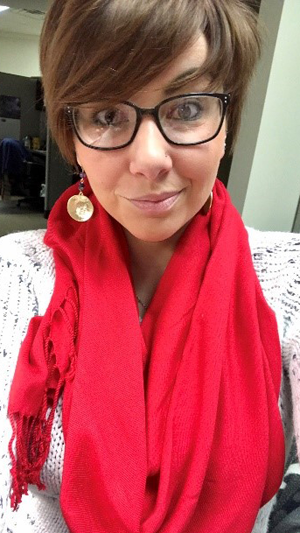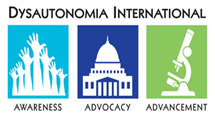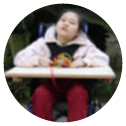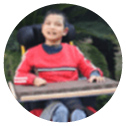I am not sure where exactly to start, so I am just going to start at the beginning. I was born a healthy kid, but did eventually develop allergies, some severe, some moderate, but outside of the deadly allergy to penicillin, nothing that would greatly impact my life, until I was much older.
That life impacting illness came during the spring semester of my junior year in high school. Over the course of about a month, I would randomly get very sick in the mornings, while I was doing my hair and getting ready. I and my mom had no idea why. After missing 20 days of school, and having doctors tell me it was all in my head, I found my way to my cardiologist’s office. He was the only medical professional that seemed to be interested in what my mom and I were saying. Although, upon my arrival in the exam room, he began asking a lot of in-depth and seemingly bizarre questions. We did not know it right away, but he was using our answers to give us the information I so desperately needed.

During my EKG, he came in and handed us a pamphlet with information on a chronic illness called POTS. My mom and I had no idea what it stood for at the time, but the symptoms were exactly what had been happening to me in the mornings! We soon found out what POTS stands for- Postural Orthostatic Tachycardia Syndrome.
POTS is a form of orthostatic intolerance that is associated with the presence of excessive tachycardia and many other symptoms upon standing, (Dysautonomia International, n.d.). While the diagnostic criteria focus on the abnormal heart rate increase upon standing, POTS usually presents symptoms much more complex than just a simple increase in heart rate. It is common for POTS patients to have a drop in blood pressure upon standing, but some POTS patients have no change, or even an increase in blood pressure upon standing, (Dysautonomia International, n.d.).
According to Dysautonomia International, POTS patients often have hypovolemia (low blood volume) and high levels of plasma norepinephrine (a hormone that is secreted from some nerve endings; helps with controlling blood pressure) while standing, reflecting increased sympathetic nervous system activation. Roughly 50% of POTS patients have small fiber neuropathy that impacts their sudomotor nerves. Many POTS patients also experience fatigue, headaches, lightheadedness, heart palpitations, exercise intolerance, nausea, diminished concentration (sometimes referred to as “brain fog”), syncope (fainting), coldness or pain in the extremities, chest pain and shortness of breath. It can also cause chronic anxiety (also known as Generalized Anxiety Disorder) and contribute to related disorders. Patients can also develop a reddish-purple color in their legs upon standing, this is believed to be caused by blood pooling or poor circulation. The color change subsides upon returning to a reclined position however, (Dysautonomia International, n.d.).
So, to put all that medical jargon into layman’s terms; when I go from sitting/laying down to sitting up or standing, my body doesn’t produce enough adrenaline to get my blood flowing back to my head due to a rapid heart rate, but low blood pressure. This has caused me to pass out a few times and feel dizzy nearly all the time. My blood also pools in my legs and stomach, especially during my showers, this makes them that much more difficult.
Also, it is interesting to note, that like people who pass out upon seeing blood, POTS patients can have additional or secondary “triggers” to their syncope (fainting); for example, mine is hair “grooming”, yep that’s right. POTS has made my scalp extra sensitive, therefore any excessive grooming or massaging to my scalp, especially early in the mornings, will trigger my POTS, and down I will go. This is one of the reasons I chopped my hair into a pixie cut, and the main reason I take my showers at night (my body has not been elevated long enough in the morning to have that much pressure on my scalp).
As one might imagine, the quality of life for someone with POTS isn’t as glamorous as it is for those without. However, while my POTS is severe, I do not have to be on kidney dialysis like some POTS patients (because fun fact: our kidneys control our blood pressure).
I have learned how to manage it over the years and have come to terms with the fact that this will be a lifelong illness. Thankfully, researchers and doctors at the MAYO Clinic and Cleveland Clinic, as well as many other institutions, are working toward finding more remedies, studying the differences in one POTS patient to another, studying how POTS affects other parts of the body besides the autonomic nervous system, and so much more.
Since this illness is considered “invisible”, many people have not heard of it, so they assume that it is uncommon. That is not entirely true. Postural orthostatic tachycardia syndrome (POTS) is a form of dysautonomia (dis-aw-tuh-noh-mee-uh) that is estimated to impact between 1,000,000 and 3,000,000 Americans, and millions more around the world, (Dysautonomia International, n.d.). This is a common illness and is seen in people of all walks of life. Having any type of chronic illness is very challenging and having a great support system in my mom helped me immensely. POTS can strike anyone, of any gender, at any age. But it mostly effects young women ages 15-50, in fact 80% of all POTS patients are female, (Dysautonomia International, n.d.)!
However, for those without this type of support, dealing with a chronic illness such as POTS, can be extremely difficult. While it is important for POTS patients to try and accomplish some level of self-care, not all of us have that luxury. Some POTS or dysautonomia patients need to be on disability, dialysis, bed rest, etc.; these doctor-mediated changes to life, can be difficult enough with someone helping you, but for children who have been abandoned, or have any other complicated illness, getting the proper care can be impossible.
As stated on Healthy Lombard, having POTS can be even harder on children. Although uncommon, it is possible for younger children to have POTS, they just develop it in different ways. Regardless, it is even more important for children to have a planned self-care routine, and for their parents to be involved. Healthy Lombard mentions several tips that children and their families or caregivers can take to manage their symptoms (but they are not just for kids, I use these tips too)! They mention the process of increasing blood volume more in the mornings; this can be achieved by consuming 10 servings of water within the first 10 minutes of waking up. This number can vary for children, depending on their size.
Additionally, Healthy Lombard mentions that it is important for children to eat multiple meals a day, and to avoid hot conditions. As one might imagine, if a child is homeless, in poor living conditions, or unable to move without some sort of assistance, these two tips become increasingly difficult to enact, especially in areas where help for these children is scarce. It is also very common for POTS patients to wear various compression garments to increase blood flow upwards toward the heart, but this is also seemingly impossible for abandoned and/or disabled children with no access to drug/medical supply stores, or even just proper and accessible medical care.
A New York Times article, titled “Ailment Can Steal Youth From the Young” written by Jane E. Brody (2011) touches on some of this as well. Jane Brody interviewed Dr. Philip Fischer, a pediatrician at the Mayo Clinic; he mentioned that while some POTS patients can be genetically predisposed to developing POTS, it is more likely that an “environmental insult” triggers its onset; such as Mono (how my POTS developed), the flu, a bad cold, an injury or a trauma, (Ailment Can Steal Youth From the Young, 2011). In short, being “down and out” for a while, usually precedes a POTS diagnosis, however, not everyone who had mono, or the flu will get POTS.
For a child who has been abandoned or is suffering from another physical disability, getting POTS is a possibility, and it is seemingly impossible for these children to be able to fully explain what is bothering them, or for them to tell if it is a separate illness or not. That is why doctors and researchers around the world are working hard to bring more awareness to this debilitating illness, in hopes to eventually find a cure.
POTS is a worldwide illness, affecting millions of people. While the Mayo Clinic is doing all it can, its researchers cannot be everywhere around the world at once. Researchers at these clinics are working on getting their knowledge to countries all over the world, so that doctors in those places will be able to help their POTS patients live a better life.

For more information on POTS, dysautonomia, and any other illness mentioned in this piece, and/or if you would like to donate to the cause, please visit: http://www.dysautonomiainternational.org/index.php
If you are part of an organization that focuses on dysautonomia and would like to partner with WFCF to raise awareness and/or offer resources and care to children and adolescents with chronic illnesses, please contact: help@world-forgotten-children.org.
Share your own personal story as I did during the World Forgotten Children Foundation (WFCF) – Month of Giving - #facesyoucantforget.
Sources:
Brody, J.E. “Ailment Can Steal Youth From the Young”. www.nytimes.com. 17 October 2011. Web. 21 June 2018. https://www.nytimes.com/2011/10/18/health/18brody.html
Drexler, A. “6 Tips For Caring For Your Child With POTS Syndrome”. www.healthylombard.com. 11 January 2018. Web. 21 June 2018. http://healthylombard.com/2018/01/11/6-tips-caring-child-pots-syndrome/
Stewart, J.M. “Orthostatic Intolerance”. www.emedicine.medscape.com. 2 February 2015. Web. 21 June 2018. https://emedicine.medscape.com/article/902155-overview “What is Dysautonomia?”. www.dysautonomiainternational.org. n.d. Web. 21 June 2018. http://www.dysautonomiainternational.org/page.php?ID=34 “What Is Small Fiber Neuropathy?”. www.healthline.com. n.d. Web. 21 June 2018. https://www.healthline.com/health/small-fiber-neuropathy
https://my.clevelandclinic.org/
http://www.sudoscan.com/for-physicians/faq-questions/#1449094134543-b3054e84-05f8



